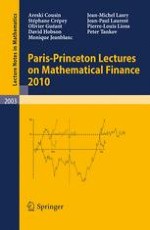The Paris-Princeton Lectures in Financial Mathematics, of which this is the fourth volume, publish cutting-edge research in self-contained, expository articles from outstanding specialists - established or on the rise! The aim is to produce a series of articles that can serve as an introductory reference source for research in the field. The articles are the result of frequent exchanges between the finance and financial mathematics groups in Paris and Princeton. The present volume sets standards with five articles by: 1. Areski Cousin, Monique Jeanblanc and Jean-Paul Laurent, 2. Stéphane Crépey, 3. Olivier Guéant, Jean-Michel Lasry and Pierre-Louis Lions, 4. David Hobson and 5. Peter Tankov.
